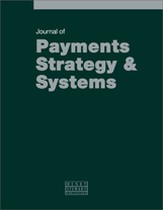The Payments Hub Spectrum: A model for the design of payments hubs
Abstract
Recent events in the financial sector have given a high profile to financial services governance. In the area of payments, there is a need to provide transparency and traceability of monetary movements. Other changes in the market environment include the strengthening of regulations and the introduction of new euro zone payments frameworks. The credit crunch further highlighted the need to monitor systemic risk exposure associated with settlement — especially for the major clearing banks that process payments for their agency banks. This paper describes a specialised IT component — the payments hub — and the design considerations in meeting the current payments industry business drivers. A conceptual model of a payments hub is introduced and its business benefits described. The functional capabilities of a payments hub are presented, categorised into three areas: process services; business services; and integration services. The technical justification for a hub is presented, highlighting its role in reducing integration complexity and in supporting modernisation initiatives within a bank. The ‘Payment Hub Spectrum’ is introduced, describing an ordered range of functional services. Depending on the specific business needs of a bank and its underlying IT systems landscape, these are shown to dictate a functionally light or a functionally rich payments hub. The business and technical factors affecting the position on this spectrum are highlighted. In conclusion, the Payments Hub Spectrum is shown to be a useful model for solution analysis, informing the architectural decisions on technology choice and on the apportionment of payments processing capability between the key collaborating components.
The full article is available to subscribers to the journal.
